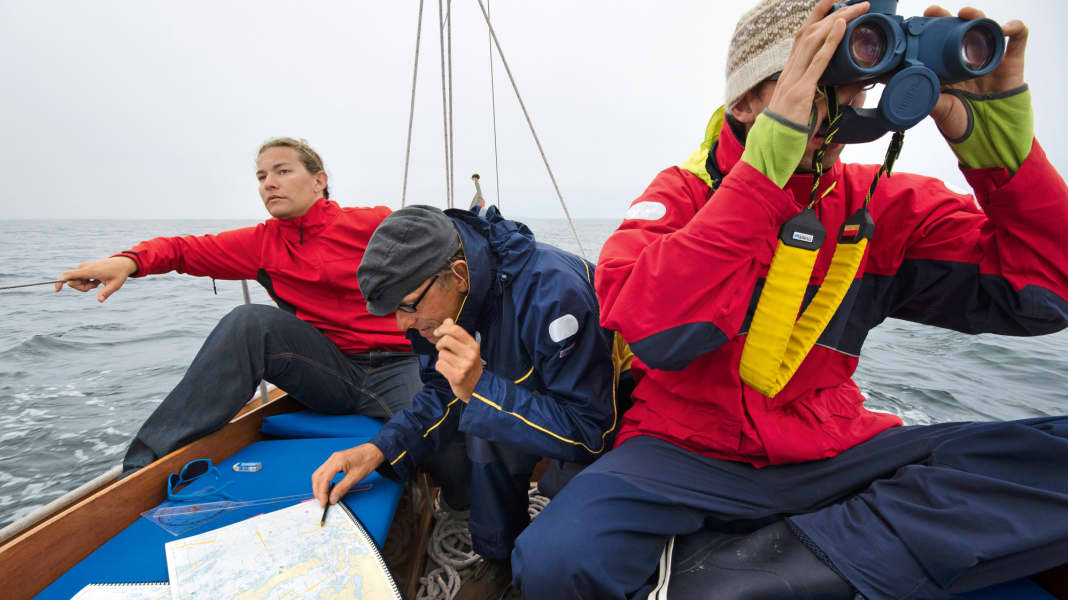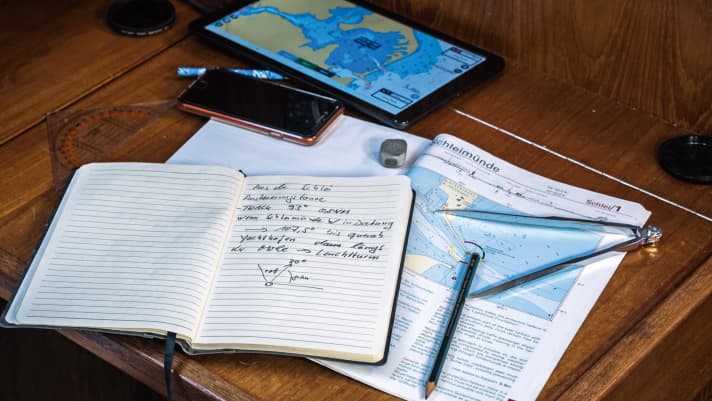
The routing is no less important than the weather! On the one hand, we want to arrive quickly, but on the other, we want our journey to be as comfortable as possible. So what should we do? Let an app calculate the routing? You can! Many app-savvy sailors use programmes such as Squid Mobile or Sailgrib. If you like it, go ahead! Here on board, things are more old school in this respect. Even at the risk of not being quite as fast and perhaps deviating a few degrees from the ideal line, we don't let this fun be taken away from us. Compasses, course triangles, pencils and paper maps are simply part of the game. This allows you to familiarise yourself with the route in detail before setting off and incorporate parameters that the app doesn't take into account.
Wind, waves, possible coverage, surface currents, but also personalPoints of Interest should be taken into account when planning. Both departure and, above all, arrival times should be planned. In tidal waters, harbours can sometimes only be accessed at certain times because they are simply blocked by gates or lock chambers at low tide. In addition, there are often invisible but very dangerous barriers.
Have alternatives for the route in mind
However, if you are not limited, it may be worth considering whether you want to arrive in a foreign harbour at night. Sailing in the dark has its own special charm, but also poses other challenges. Here on board, we like to sail at night, but only arrive in a foreign harbour in the dark if we have to. However, you should then try to reserve a berth in advance and familiarise yourself with the harbour plan in detail. It is always a good idea to have an alternative harbour or at least a sheltered anchorage up your sleeve.
Other questions that are always included in solid cruise preparation are: Are there any restricted or dangerous areas, wind farms or shipping lanes? For example, in the form of traffic separation schemes. It is often said that they must be crossed at right angles. But that would mean that you would have to keep ahead with wind or power from the side in order to stay on course. But that is exactly what should not be done! Instead, the keel direction of the crossing vessel must be at right angles to the general direction of traffic. The background to this regulation is that at night and in uncertain weather conditions, others can recognise - especially by the position lights - that it is crossing traffic.

Are licences required for the route?
Also consider when routing whether you need to register somewhere en route or even obtain passage permits, for example before bridges or locks. Then make a note of the relevant radio channels or telephone numbers. It goes without saying that the radio is always on standby on channel 16. In our sailing areas, you can also call Bremen Rescue if you have any questions. Even if you don't get a specific answer, they usually know who to contact. So please don't be shy about using the radio. Anything that makes the trip safer may be used.
More information about Elwis
The notices to mariners (BfS) inform me about what else might be going on on my planned route without the chart telling me because it is only temporary or has just happened. These include, for example, temporary firing ranges, construction sites, diving work, extinguished beacons and much more. The BfS and other interesting facts about shipping can be easily accessed online via the Electronic Waterway Information Service, or Elwis for short.
Finally, a completely different point: Who actually notices when you don't arrive somewhere or are at least overdue? Right, in case of doubt, nobody! At least not immediately. Small crews or single-handed sailors in particular should leave an estimated time of arrival somewhere and report when they are moored in the harbour of destination or if there are delays. The DGzRS offers its free SafeTrx app for this purpose - an extremely useful feature!

